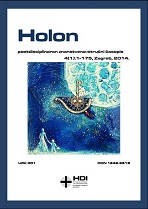Načela održive gradnje u oblikovanju životnog prostora: vizualna udobnost kao odrednica održive kvalitete
Principles of sustainable construction when designing a living environment: Visual comfort as an element of sustainable quality
Author(s): Gregor ČokSubject(s): Architecture
Published by: Hrvatsko društvo za integralnost
Keywords: guidelines for sustainable construction; productive residential environment; visual comfort; legislation
Summary/Abstract: Designing a productive residential environment is one of the key objectives of sustainable planning and design. Based on the analysis of a chosen example of sustainability guidelines we establish that the technological aspect (demands regarding energetic efficiency, rationality, recyclability etc.) is notably exposed amongst the criteria for building planning, and the list of “anthropological” parameters which define the other characteristics of the residential environment is defined to a smaller extent. The term “residential comfort” is technologically defined in the group of criteria on minimal technical demands regarding heat, noise, lighting and air quality, the other elements, such as e.g. visual comfort (architecture of the interior, the building and the exterior space) are defined only in principle in the criterion of “design quality” without exact demands and standards. The research is aimed at defining the remaining parameters, which are not defined in detail in the list of criteria, but have a significant influence on the visual comfort in terms of visual perception of space. This is the area of an architect’s creativity, user’s needs and other subjective elements, which cannot be practically numerically defined. Within the research we used individual applicative projects to simulate the discussed guidelines and a descriptive method was used to establish the significance of visual diversity when designing residential environment. We ascertained that for planning architectural concept (design quality) there are at least three important project approaches which can have a key influence on guaranteeing visual diversity – which are: 1) visual connection of the building with the exterior space, 2) physical connection of the building with the exterior space and 3) the concept of internal atriums.
Journal: Holon
- Issue Year: IV/2014
- Issue No: 1
- Page Range: 58-88
- Page Count: 31
- Language: Croatian

